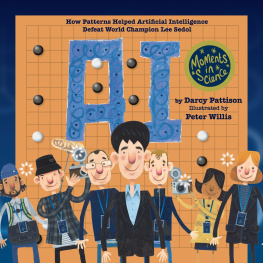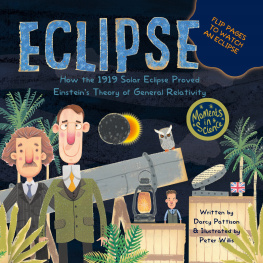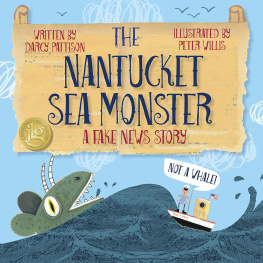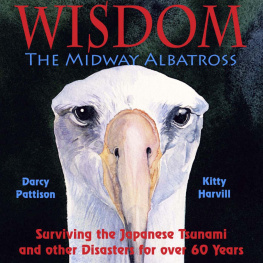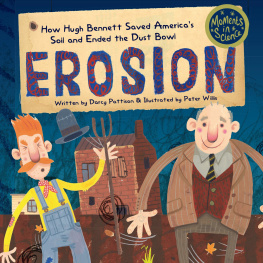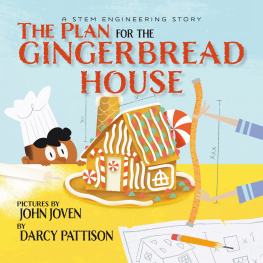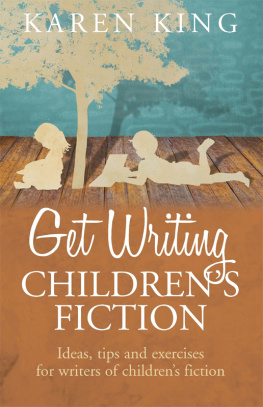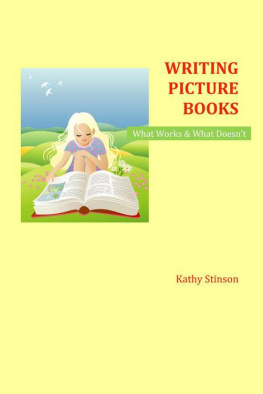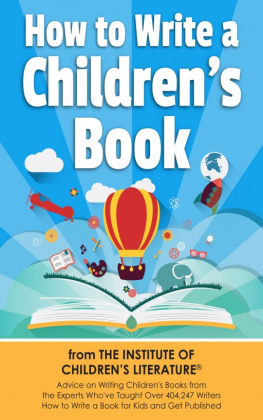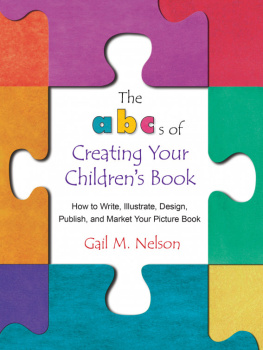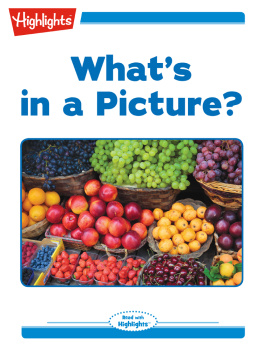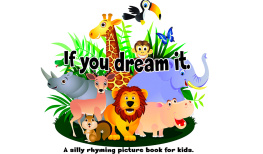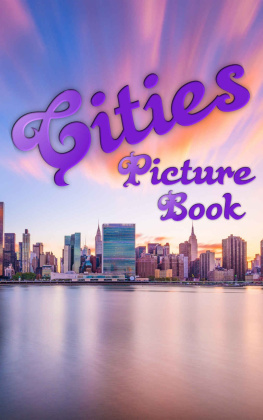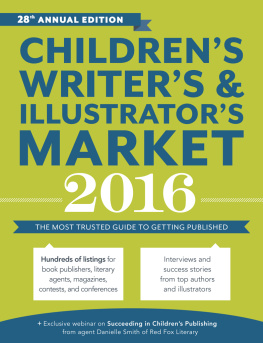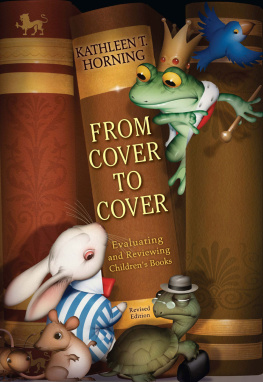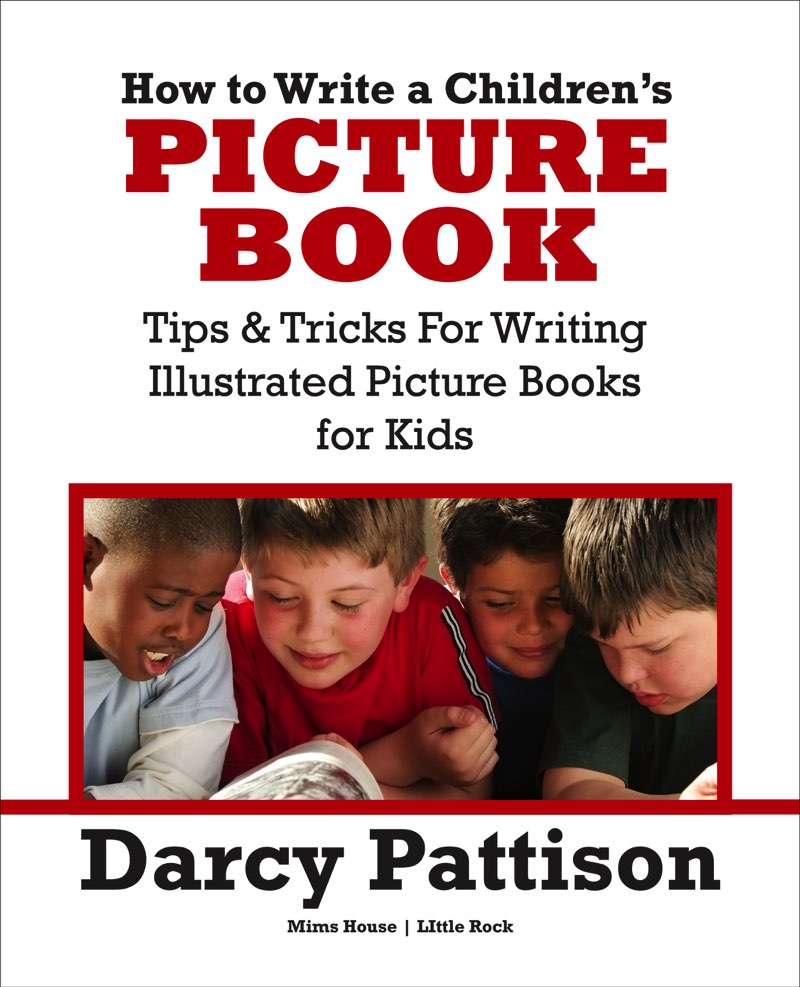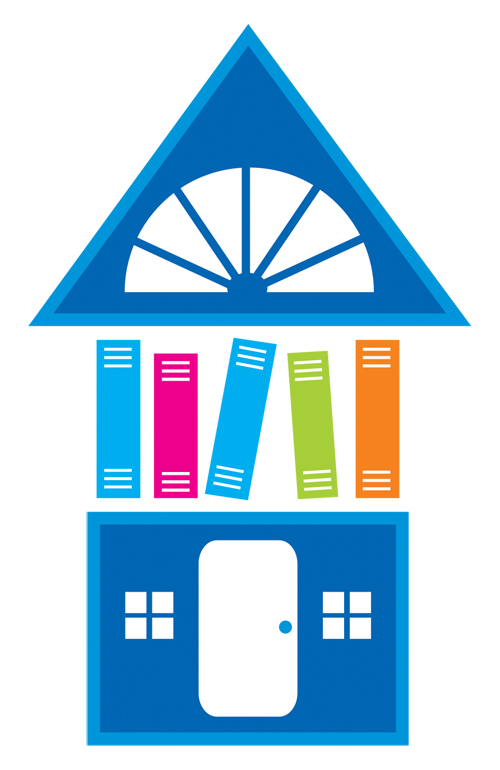Introduction
P icture Books
Childrens literature includes a special category of books, illustrated books that appeal to kids. These are designed to give children something to look at while they listen to or read a story. The genre has developed over the last 100 years into a unique art and literary form. This book will talk about the genre from many angles, including the characteristics unique to picture books, how eBooks are changing the genre, sub-genres of pictures books, and how to write and submit picture books for publication. If you want to really understand picture books, be sure to take the time to read the suggested titles. Look outyou may get hooked on this deceptively simple book genre.
How to Use this Book
Are you ready to jump into writing a picture book? Before you start writing, take this quiz:
1. How many pages are in a typical childrens picture book?
2. Who is the audience for a childrens picture book?
3. Are there restrictions on the vocabulary you use in a picture book?
4. Do you have to write in rhyme? Do manuscripts written in rhyme sell better?
5. Do ePub books have to be the same length as printed books?
If you know the answers to most of these questions, youre ready to write! If youre not sure about a couple, then review the Picture Book Basics.
You can take one of three routes through this book
If you are comfortable that you know the basics of picture books, then its time to move to the next two sections of the book, Genres and Write. You can use one of these strategies to write, revise and submit your story:
1. Read about specific genres first and then the specific steps of writing and revising a picture book. Go to the Workbook section and write.
2. Read about writing and revising a picture book; read only the genre specifics you need for your type of picture book. Go to the Workbook section and write.
3. A combination of the first two options. You could read a couple genres while studying how to write a picture book, and then, read a couple more genres as you decide on the topic for your story. Go to the Workbook section and write.
B ASICS
Lets get started! Here, well discuss some of the basics of picture books. In each lesson, I mention specific picture books titles to make a point. You should try to find these books at your library and read through each. At the end of each lesson, try to find ten more books that illustrate the point. Its best to use books published within the last five years because this will help you become familiar with what is being published today. Here are the topics well discuss:
P icture Book Structure : Why 32 Pages?
Does ePub Change the 32-page Illustrated Picture Book?
Putting the Picture in Picture Books
The Dual Audience for Picture Books
Picture Book Settings
Options for Picture Book Characters
Messages, Morals and Lessons in Picture Books
Picture Books: Folk Tales or Modern Stories?
General Resources for Picture Books
Chapter One
Picture Book Structure: Why 32 Pages?
L ets start with the most noticeable difference about childrens picture books: they are short. Picture books are almost always 32 pages. The reasons for this are physical: when you fold paper, eight pages fold smoothly into whats called a signature. Any more pages results in a group of pages too thick to bind nicely. In addition, the 32 pages can all be printed on a single sheet of paper, making it cost-effective. In extremely rare cases, picture books may be 16, 24, 40 or 48 pages, all multiples of eight (a signature); but 32 pages is industry standard.
Francoise Bui of Doubleday Books says, Well do a longer book if the story needs it. The most likely time is if its a holiday or seasonal book, that we plan to give a bigger marketing push, and it needs those extra pages to tell the story. If Ive acquired a story I really like, and if it needs extra pages, Ill do it.
There are variations: in my picture book, The Journey of Oliver K. Woodman, the illustrator, Joe Cepeda, takes 48 pages to tell the story. The text is letters or postcards, written by someone who gives a lift to Oliver, a wooden man, who then writes back to Uncle Ray to report on Olivers progress across the nation from South Carolina to California. There are fourteen letters for fourteen spreads. Cepeda added wordless spreads between each letter to show Oliver actually traveling. It gives the book a more spacious feel, as if the reader is traveling along with Oliver. So, you may see board books at 16 or 24 pages, and picture books at 32, 40 or 48 pages. But the gold standard for picture books is 32 pages.
P icture Book Layouts
When you lay out pages for a picture book story, there are two options. First, you can look at each page separately. Second, you can talk about double-page spreads; when a picture book is opened flat, the two facing pages are often illustrated as one. Thus, in a 32-page book, you would have a single opening page (the right hand side of the book), fifteen double-page spreads, and a single closing page (the left hand side of the book). Decorative end papers may be glued to the cover boards, which would enclose them. Sometimes, the end papers are counted as part of the 32 pages, and sometimes they are not. If you see a picture book that says it has 28 pages, the end papers make up part of the signature.
In those 32 pages, there are usually front matter pages consisting of a title page, a half-title page, and a copyright page. Sometimes, theres a dedication page. In single pages, this may take 4-5 pages. In double-page spreads, its the first single page and one or two spreads. The text then has 27-28 pages or 14 spreads, plus a last single page.
Many conventions have grown up around the 32-page picture book: the page 32 twist, the character opening, the use of double-page spreads, and so on, all things well get to later. All that is good. Writers and illustrators took the restricted format and made it into a thing of beauty.
One way to visualize the picture book layout is by using the thumbnail layout (See the Thumbnail Layout in the Workbook section.) The layout shows a small version of how a book fits into 32 pages. Its called a thumbnail because the illustrator does a rapid sketch, thumbnail size, to illustrate the layout. The X before page 1 and after page 32 means that these pages do not exist.
Short Story or Picture Book?
Concentrating on the skeleton of the picture book may seem boring or unnecessary, but it is one of the two main differences between short stories and picture books. One mistake made by beginners is to have too many or too few pages to fit into this format. Why cant the publisher ignore the standard page limits and just print the size book needed for a particular story? Again, the reasons are physical: the way the paper folds and standard sizes of paper for printing. Literary agent Tracey Adams says, Its definitely easiest to market a picture book meant to be the standard 32 pages.
Q uestion : 32 pages? Please Explain More
Question: It isnt clear to me the relationship between the pages of a picture book and the pages of typed text that the author writes. Does an author just write text and the publisher divides it into 32 pages? Or should the author divide the text and show the page breaks when submitting the manuscript.


